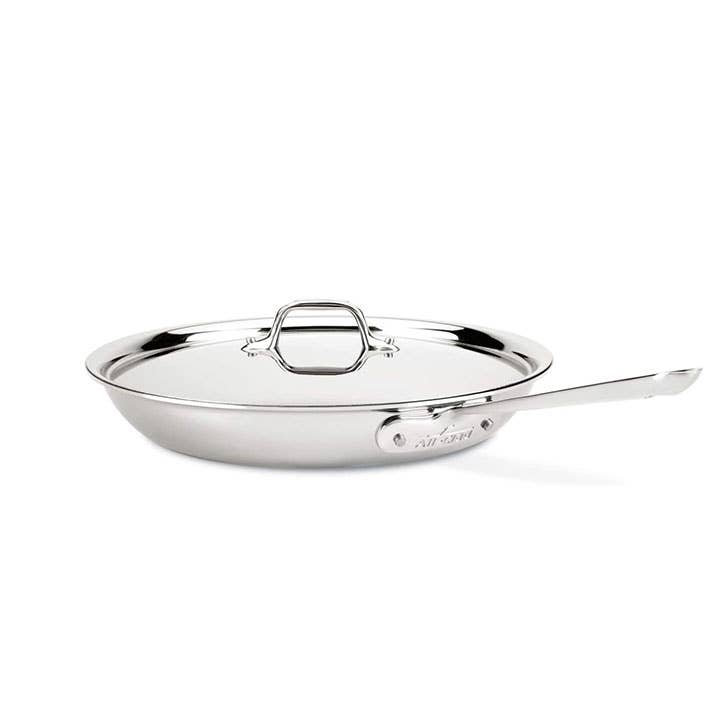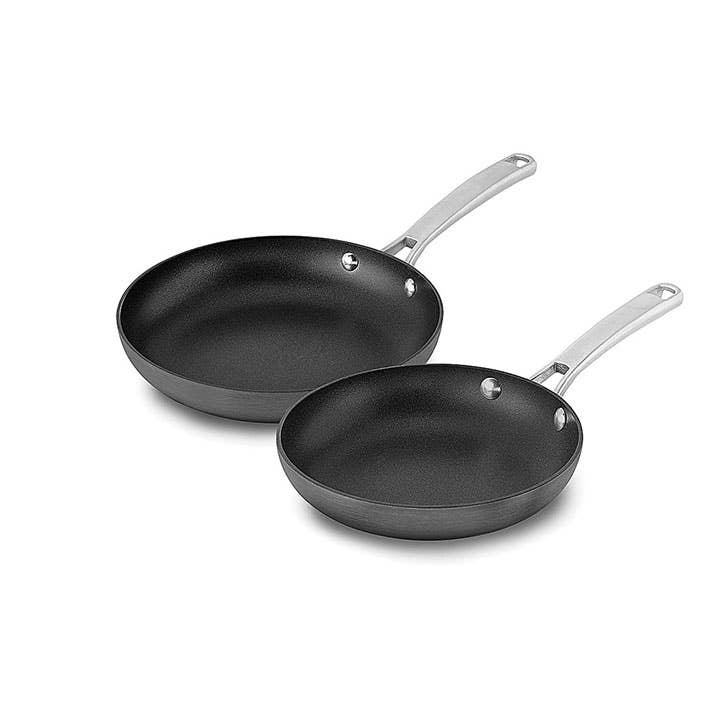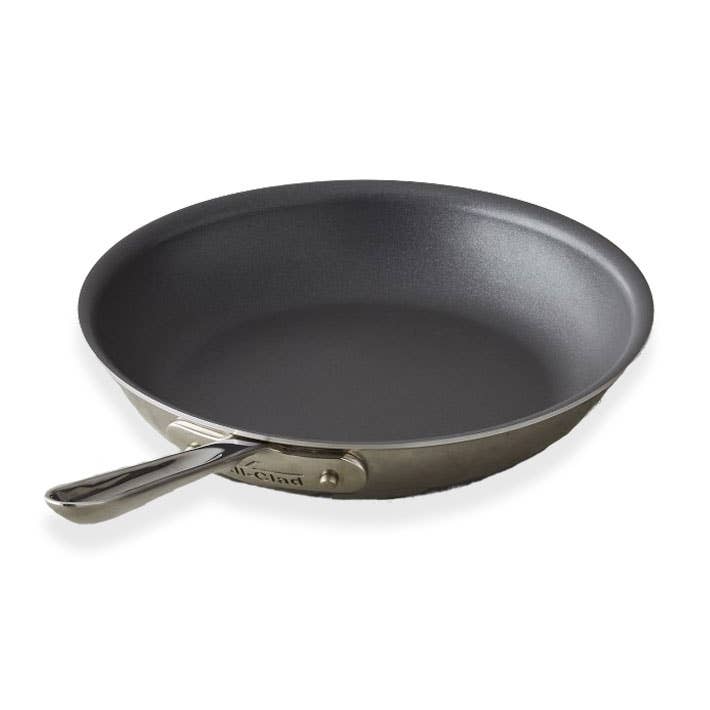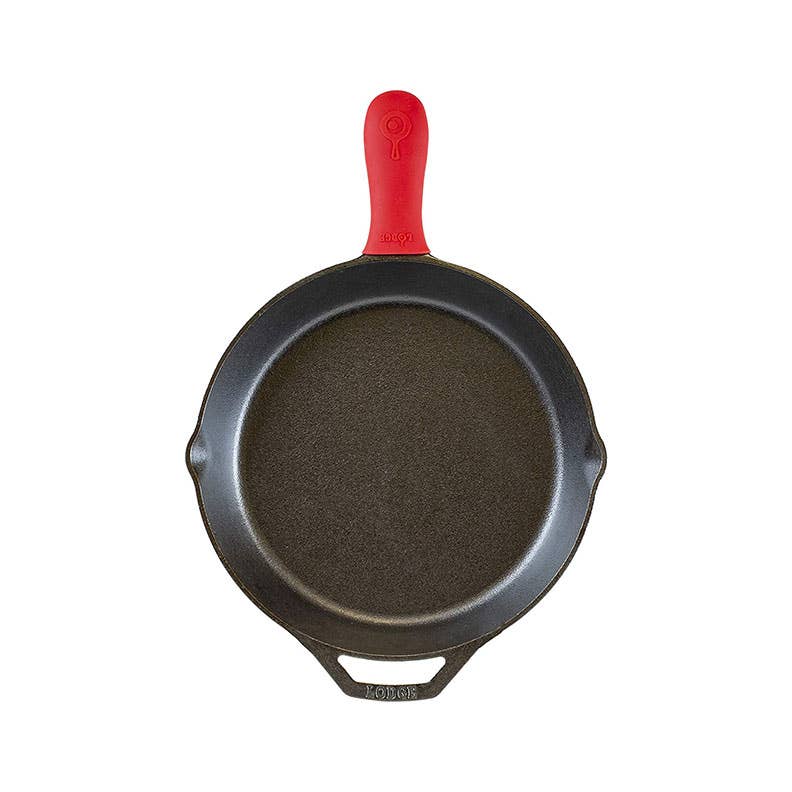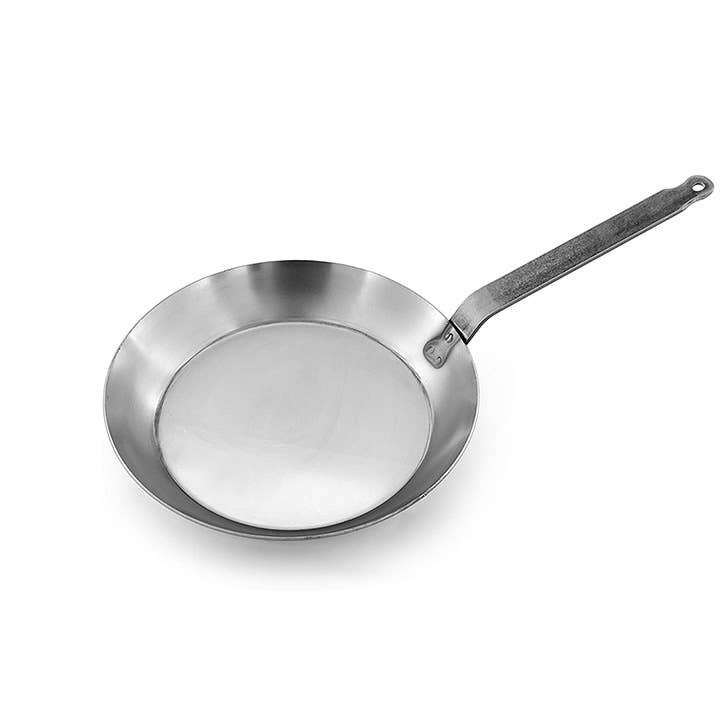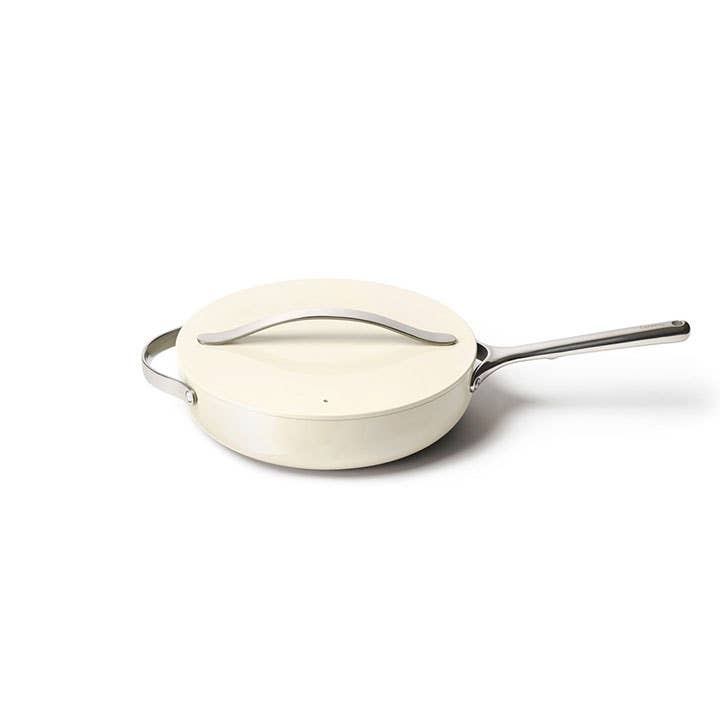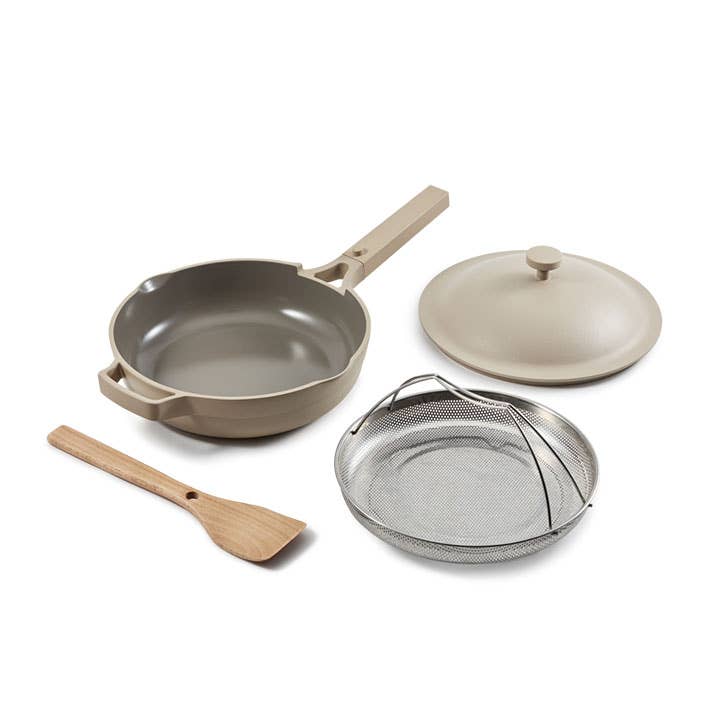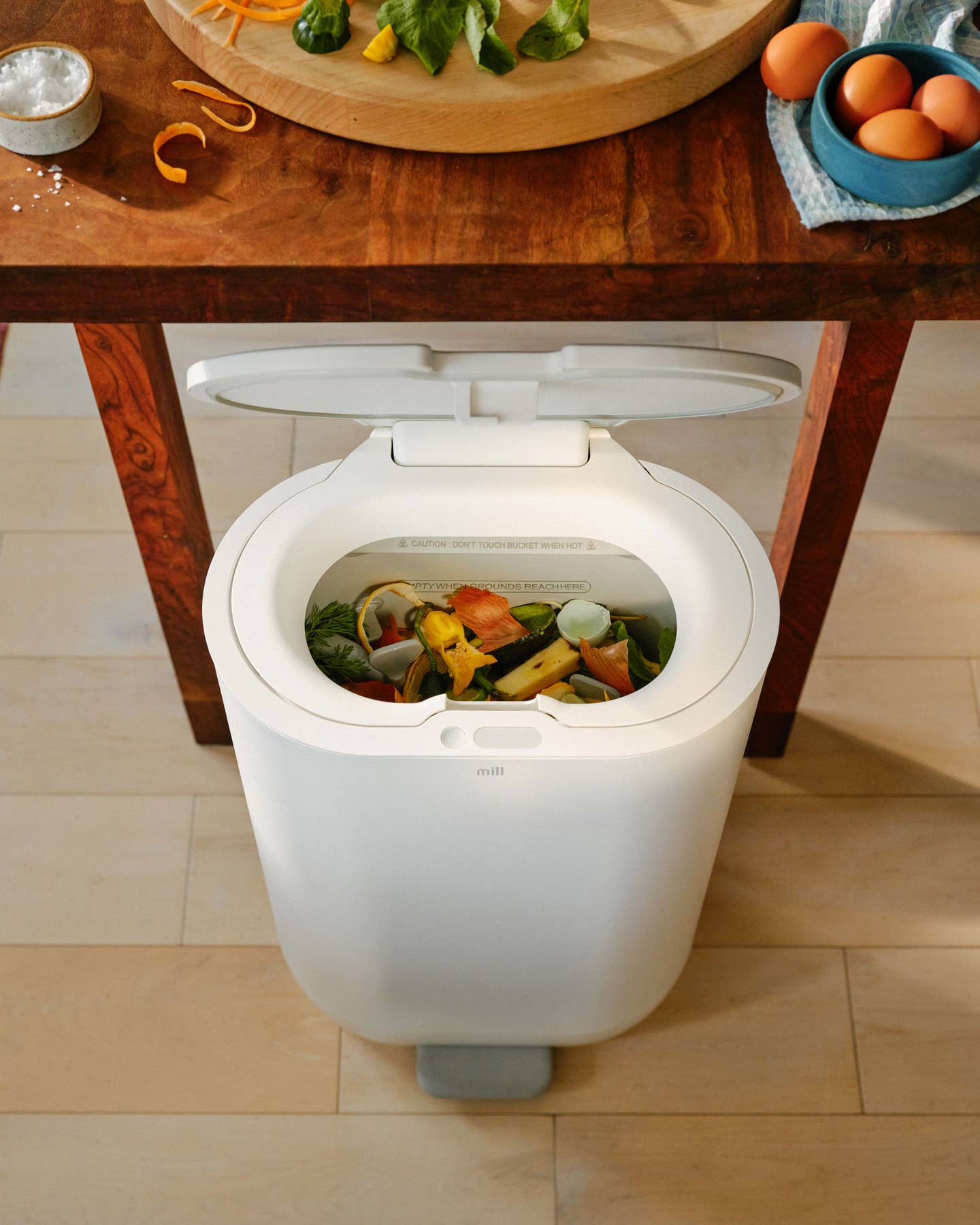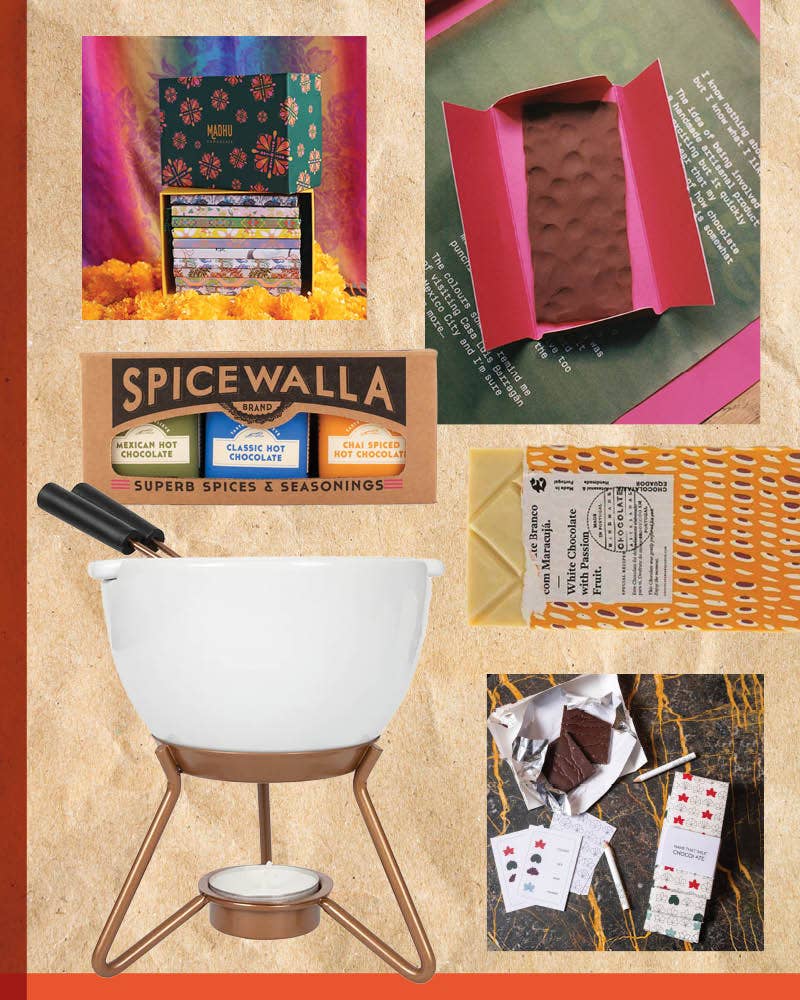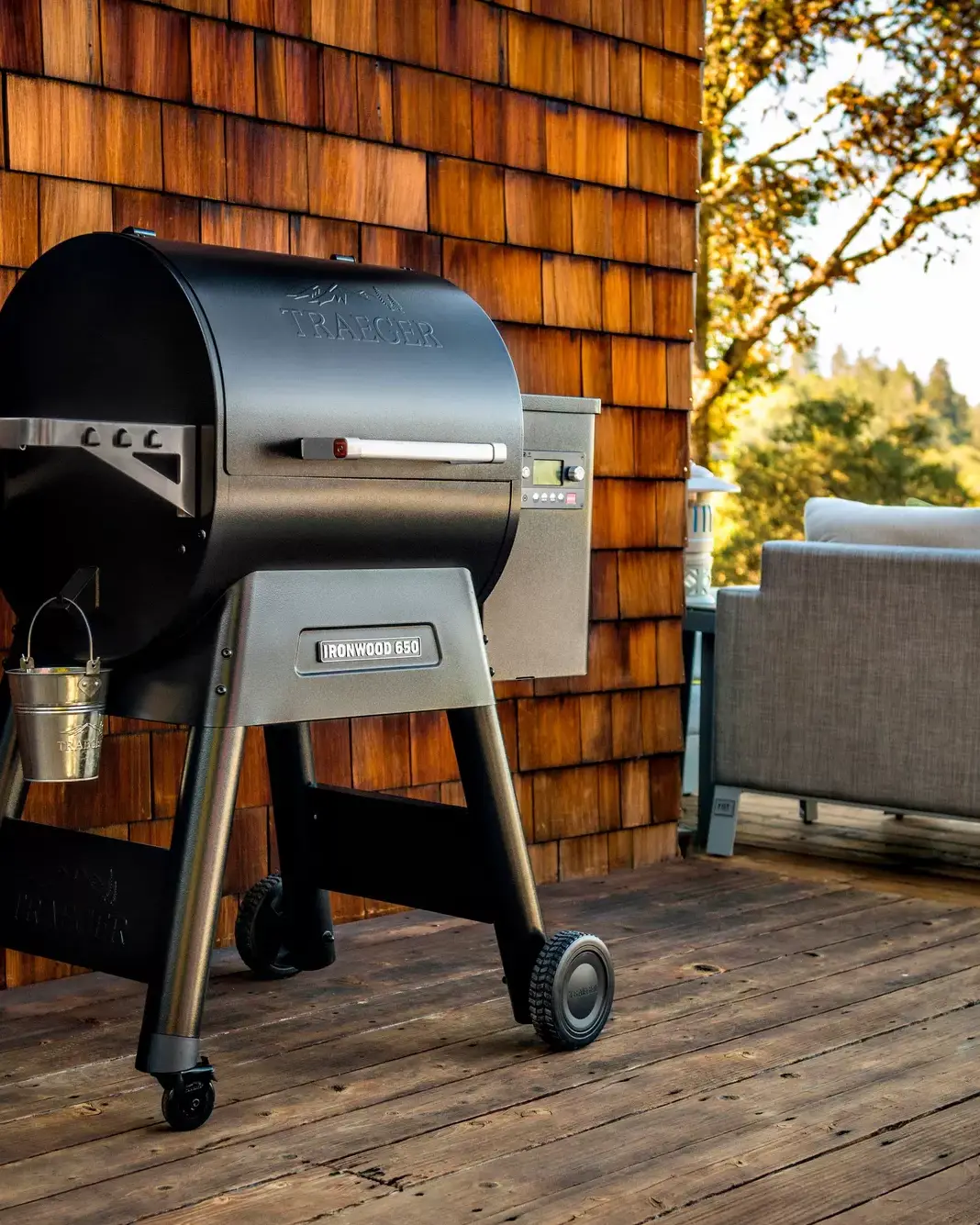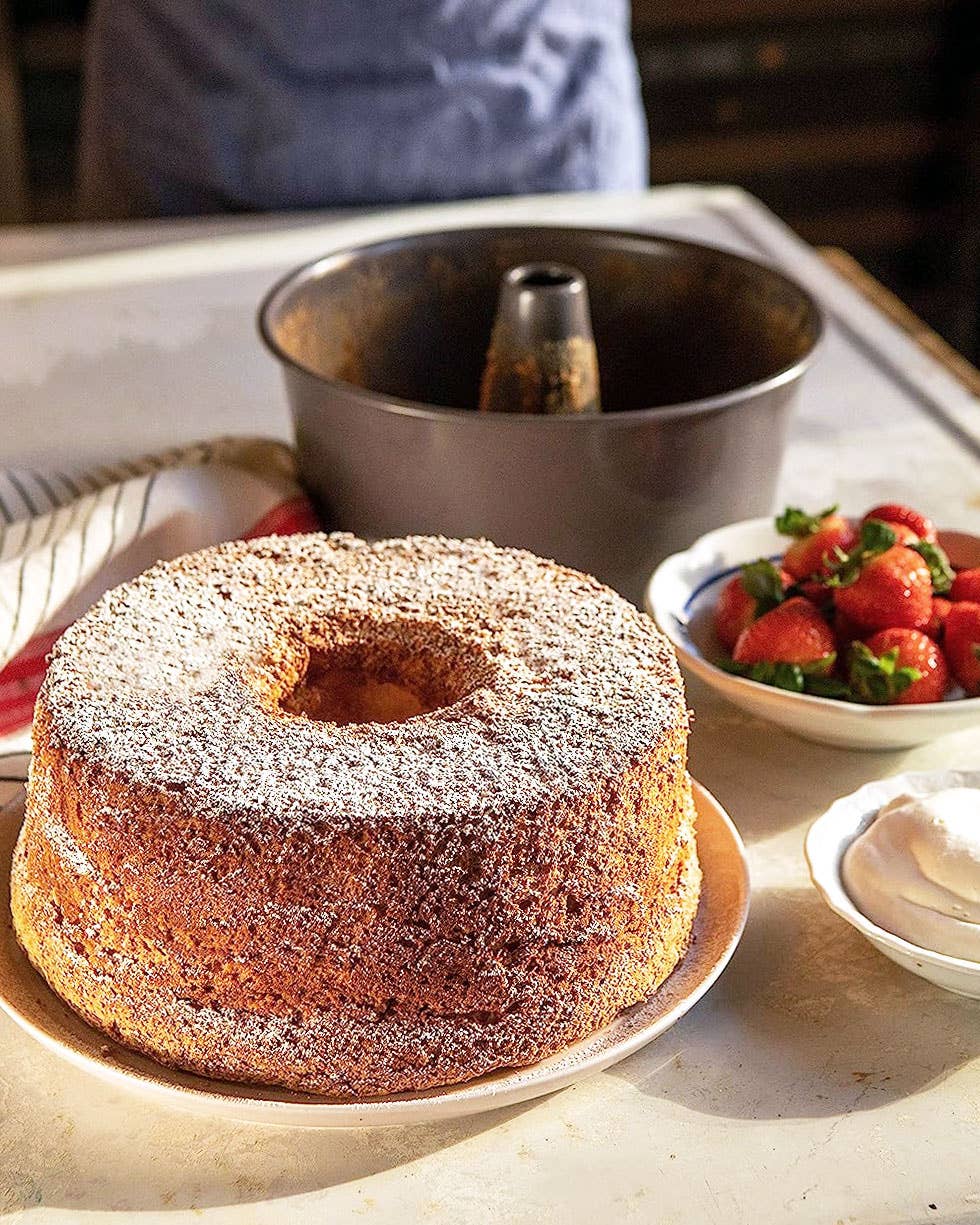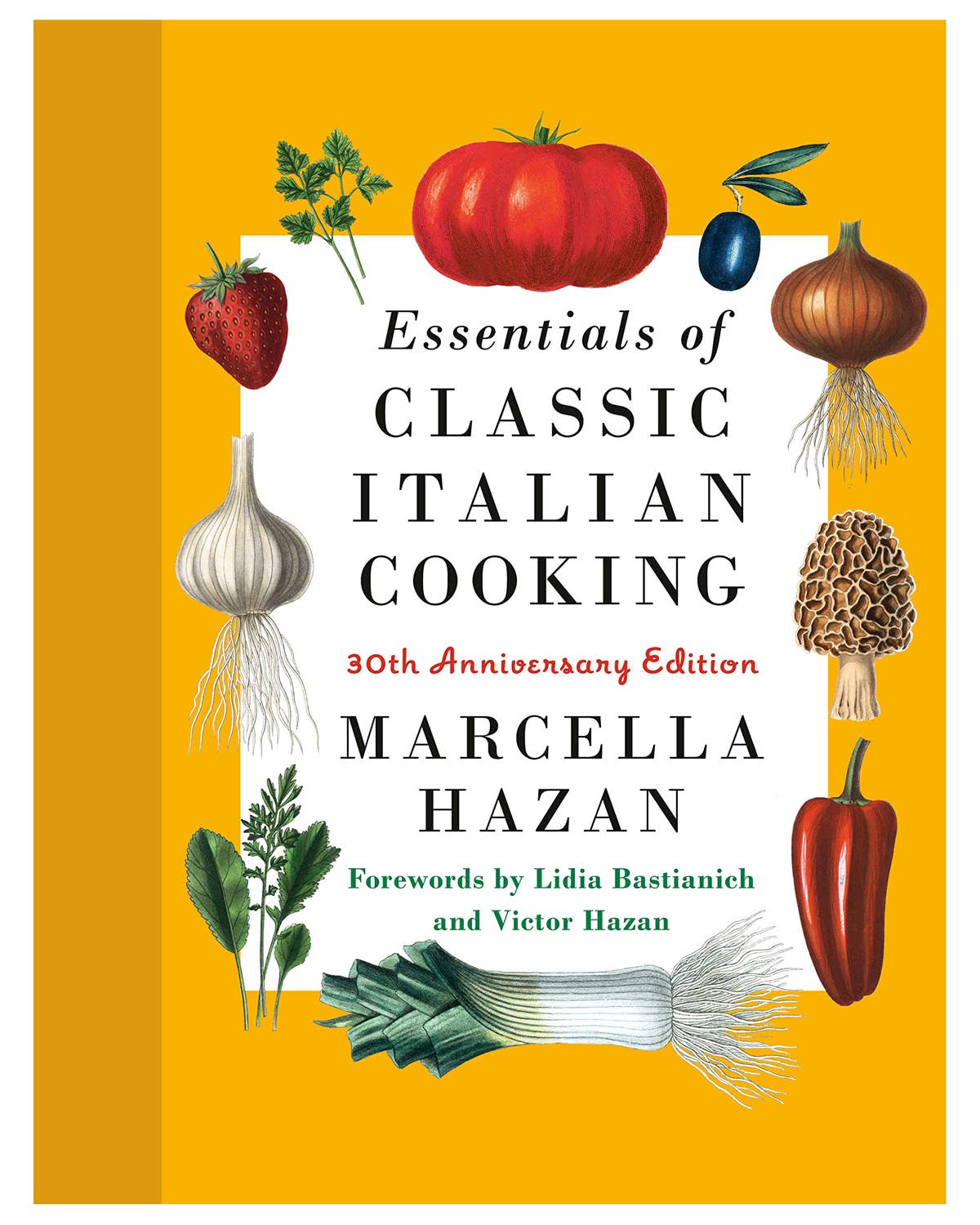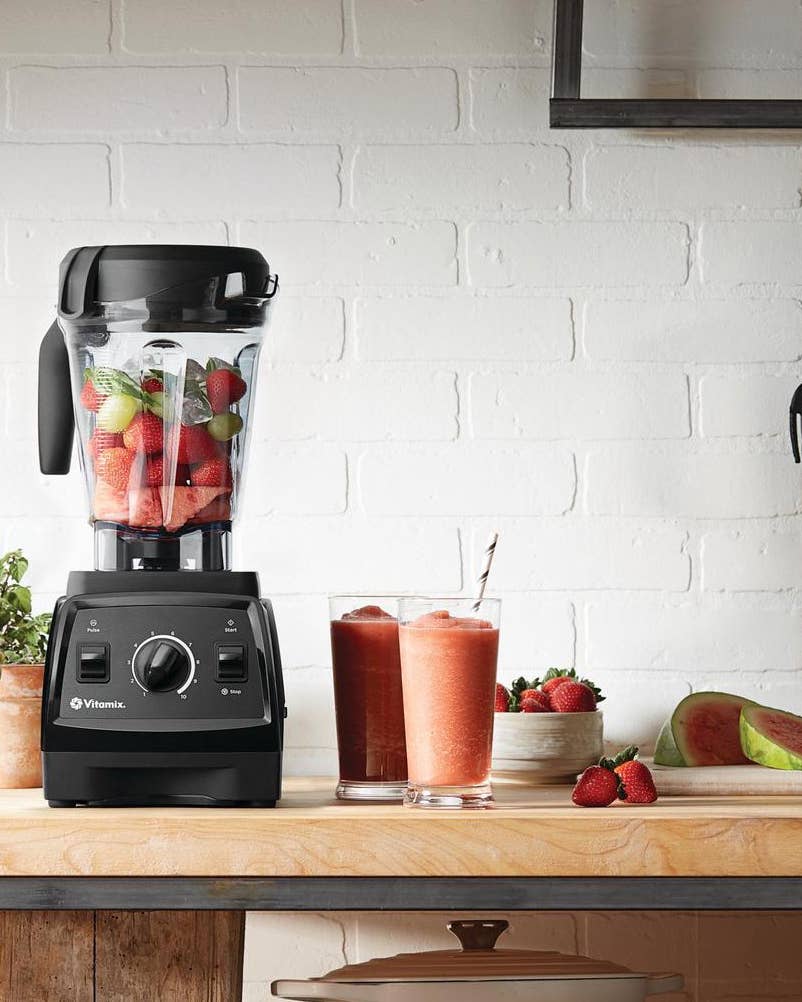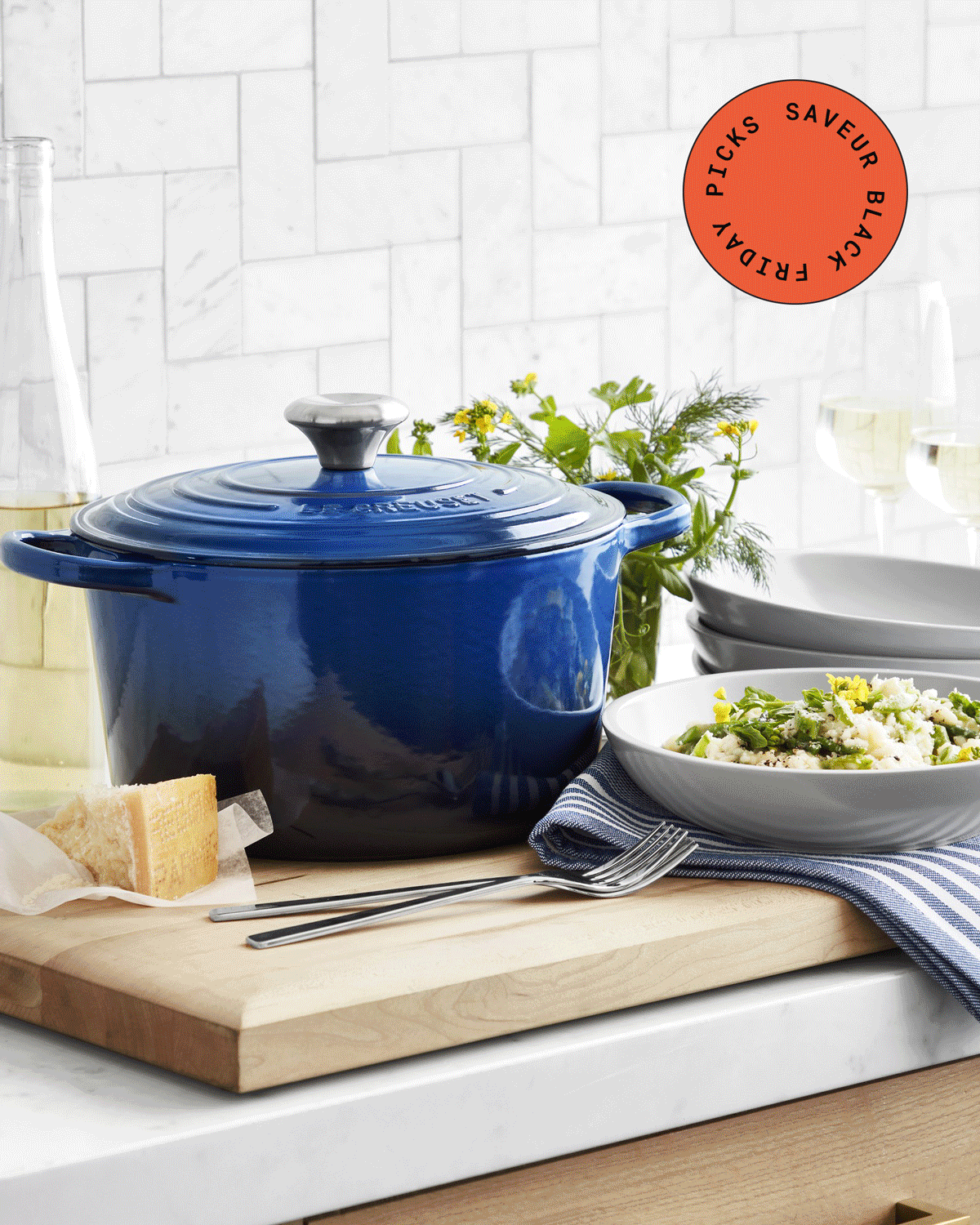Sear, Sauté, and Sauce Your Way to a Better Dinner with the Best Skillets
This may be the most important piece of cookware you buy.
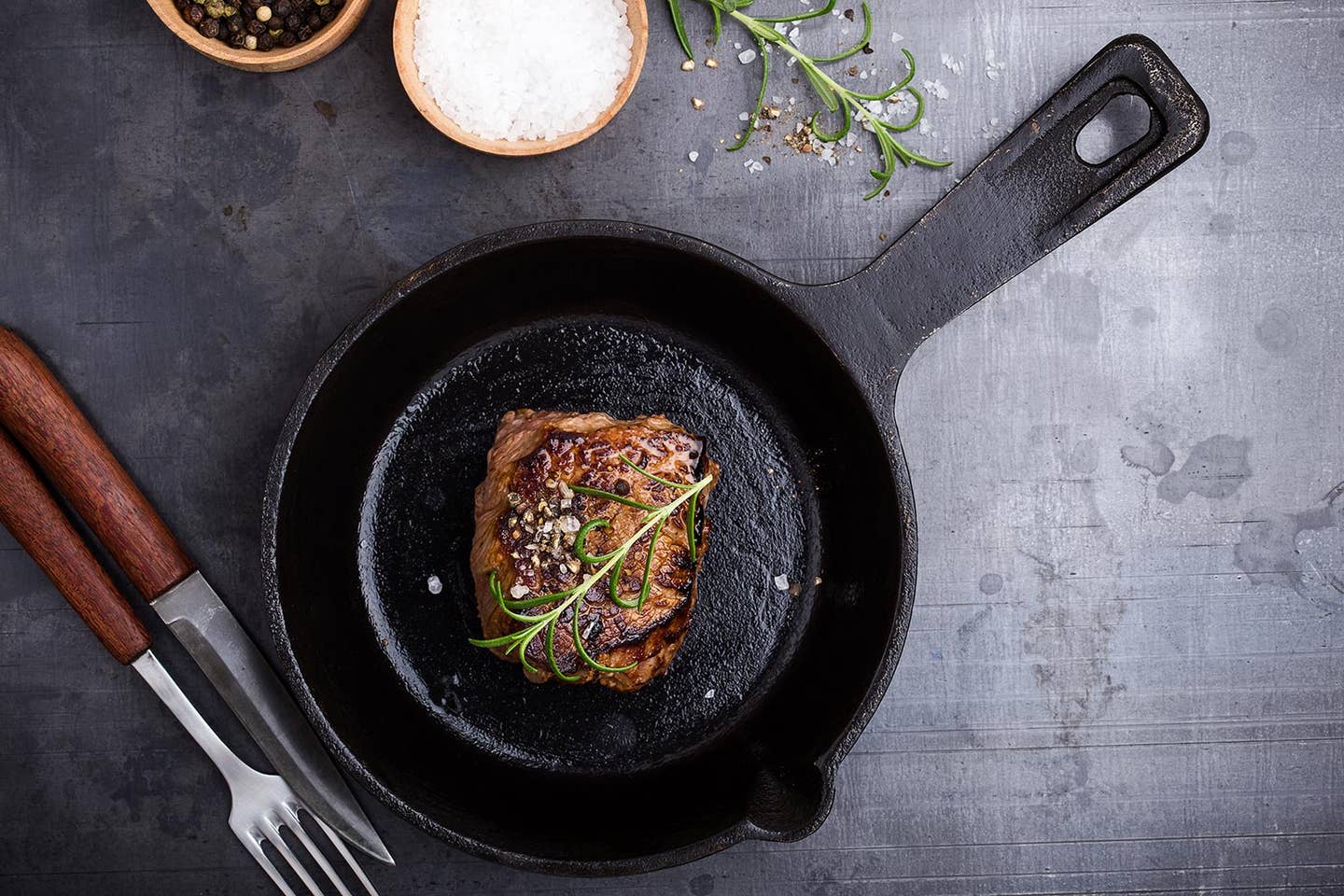
There are skillets, and then there are skillets, the kind you drag with you from your early-20s apartment to your early-40s home. It’s a skillet—in italics—that you want if you’re looking to invest in long-term cookware. If you’re serious about cooking, consider shopping for the type of skillet that will carry through years of kitchen wear and tear. Not only does a high-quality skillet hold up over time, it also offers better performance: more evenly cooked food, a darker sear, fewer kitchen tragedies (burned food, we’re looking at you).
But what kind of skillet is the best kind for you? And what do all of those pesky terms, from aluminum core to copper-bottom, actually mean? Here, we break down materials, size, and use for the ultimate guide to this year’s best skillets.
- Best Overall: All-Clad D3 12-Inch Fry Pan with Lid
- Best Value: Calphalon 2-Piece Classic Nonstick Frying Pan Set
- Best Nonstick: All-Clad d5 Stainless-Steel Nonstick Fry Pan
- Best Cast Iron: Lodge Pre-Seasoned Cast-Iron Skillet with Assist Handle Holder
- Best Carbon Steel: Matfer Bourgeat Black Carbon Steel Fry Pan
- Best Ceramic-Coated: Caraway Sauté Pan
- Best Multi-Purpose: Our Place Always Pan
Features to Keep in Mind
Material
Pans come in a variety of materials, from carbon steel to copper. To help narrow down the best skillet for you, consider your cooking habits, budget, and tolerance for cleaning up the occasional stubborn residue. If the latter is a deal-breaker, look no further than nonstick, which is ideal for cooking eggs, flash-searing meats, and sautéeing foods with minimal fat content that are more prone to sticking. Justin Lee, chef and owner of New York City’s Fat Choy, calls nonstick pans “the champion of home cooking.”
“Your home range doesn’t have the firepower of a professional kitchen,” he says. “You’re not Escoffier, and you likely aren’t paying someone to wash dishes. Reach for that nonstick, and, if anyone asks, tell them Chef said it was cool.”
If you plan to do a lot of searing and browning, think cast iron, aluminum, stainless steel, and copper. All are excellent heat conductors, but note that cast iron can be extremely heavy, and copper is pricier than most materials. Ceramic pans, somewhat new to the market, are an excellent alternative to traditional nonstick, which has been known to leave residue behind (pieces of the nonstick coating can actually separate from the pan over time, and land in your dinner).
Consider the interior—or core—of the pan when shopping, too. “Aluminum is a key material that one should look for as part of, or included in, the middle of skillets,” says Crystal L. Ivey, senior brand manager of Calphalon Cookware. “Stainless-steel skillets that do not have aluminum cores will not distribute heat or cook as evenly as those that do.” Copper-core pans, on the other hand, are renowned for their exceptional heat distribution.
Size
Skillets come in a host of sizes, though the most traditional are 8-inch, 10-inch, and 12-inch. When searching for the skillet of your dreams, Joshua Lanning, executive chef for Peoria, Illinois’ KDB Group, suggests considering how many people you typically cook for and the sort of dishes you lean on most (sautéeing to brown, for instance, requires more space). But his cardinal advice regarding pan-size is simple.
“Go bigger, give yourself room to play,” he says. That being said, “too big, you’ll burn. Too little, you’ll steam.”
Finding the right pan is a little bit like Goldilocks, and it’s not a bad idea to have a variety of sizes on-hand. A set of skillets is often a good way to ensure that you have the right equipment for any task, says Ivey, who suggests a 10- and 12-inch set.
Heat Distribution
A pan that lacks adequate heat distribution can have hot and cold spots, which may result in uneven cooking (and brown on your otherwise perfectly baveuse French omelette). Copper, Lee says, is the best conductor of heat, and is ideal for foods that require even distribution and rapid cooling, like eggs. Copper, however, is expensive, and materials like cast-iron and aluminum also do a more-than-adequate job of retaining and distributing heat. Overall, Lee suggests looking for a heavy-bottomed pan in the material that suits you best.
“A pan that doesn’t distribute the heat from edge to edge, but instead only directly in the middle, will cause a burn spot in the middle of the pan,” Lanning says. He suggests stainless steel as a versatile material that distributes well, along with cast iron, carbon steel, and copper.
Our Top Picks
Best Overall: All-Clad D3 12-Inch Fry Pan with Lid
Best Overall
This kitchen workhorse has a flat base and sloped sides, perfect for flipping everything from eggs to sautéed vegetables. For maximum heat distribution, an aluminum core is sandwiched between double layers of stainless steel. The pan can withstand heat up to 600 degrees Fahrenheit and is compatible with induction stoves. A stainless steel handle and matching lid make this a stylish and handy addition to your cookware collection. For all-purpose use, this is the year’s best frying pan. Bonus: it comes with a lifetime warranty.
Best Value
This set includes an 8-inch and 10-inch skillet, and it’s a steal at just under $50. These hard-anodized nonstick pans have everything you need for quick and convenient cooking, including stay-cool stainless steel handles that resist cooktop heat. Covered in a two-layer, PFOA-free nonstick coating, these pans will be around for the long haul.
Best Nonstick: All-Clad d5 Stainless-Steel Nonstick Fry Pan
Best Nonstick
This Williams Sonoma special is available in three standard sizes: 8-, 10-, and 12-inch. While the cooking surface is nonstick, the exterior is a lovely-to-look-at stainless steel. The five-layer construction guarantees excellent heat distribution, while the sloped sides make this an ideal skillet for flipping and sautéeing. Your eggs won’t stand a chance.
Best Cast Iron: Lodge Pre-Seasoned Cast-Iron Skillet with Assist Handle Holder
Best Cast Iron
One of the best cast-iron skillets on the market, this 12-inch skillet with handle holder can be used in the oven, on the stove, or even on the grill. The durable cast-iron material holds and distributes heat evenly, meaning this pan excels at everything from sautéeing to braising to searing to frying. Pre-seasoned with natural vegetable oil, this pan is ready to go as soon as you are.
Best Carbon Steel: Matfer Bourgeat Black Carbon Steel Fry Pan
Best Carbon Steel
Carbon steel falls into the category of cast iron-meets-nonstick, and this is the best carbon steel pan available. The material is durable and retains heat just like cast iron, but it weighs less and heats up faster. Free of any chemicals or coatings, this pan can be seasoned and used like a traditional nonstick on any type of cooking surface, including an induction range. An angled handle, which is welded to the pan itself, makes it an ideal sauté pan.
Best Ceramic-Coated: Caraway Sauté Pan
Best Ceramic-Coated
An 11.8-inch, 4.5-quart capacity ceramic-coated pan, this cult classic can withstand up to 550 degrees Fahrenheit of oven heat and comes in six playful colors. It’s also one of the best frying pans out there. The ceramic coating is PTFE-free, and the aluminum core ensures that food cooks evenly. According to reviewers, it’s one of the top-rated skillets around. And possibly the best selling point is that this pan and its lid are dishwasher-safe.
Best Multi-Purpose Pan: Our Place Always Pan
Best Multi-Purpose Pan
Search the internet for frying pan reviews and you’re sure to come across the Our Place Always Pan. Our Place has developed a formidable social media following, and the reason is clear: this nonstick ceramic pan, with its beechwood spatula, steamer basket, and spoon rest, is an excellent specialty buy. The 10.5-inch sauté pan comes in nine colors and has pour spouts and a modular lid. With a nearly 3-quart capacity, it can also be used for tasks that require a deep vessel, like boiling water or stock, or steaming vegetables or dumplings.
Our Take
Whether you’re in the market for a classic cast-iron pan, value-driven set, nonstick workhorse, flexible carbon-steel upgrade, or colorful ceramic addition to your kitchen, there is a pan out there for you. These six selections are the best of the bunch, but you should definitely see for yourself.
Keep Reading
Continue to Next Story
